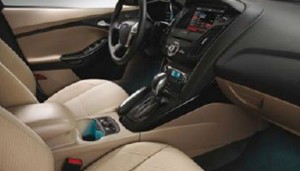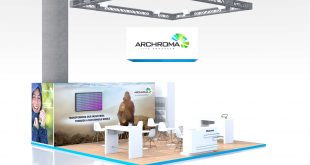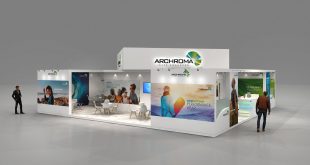 While some people enthuse about the ‘steel of the 21st century’, others warn against expecting too much from the use of carbon fibre materials in large-scale motor vehicle production for reasons of technology and cost.
While some people enthuse about the ‘steel of the 21st century’, others warn against expecting too much from the use of carbon fibre materials in large-scale motor vehicle production for reasons of technology and cost.
While proponents provide proof of feasibility with automotive bodies manufactured entirely from carbon fibre reinforced plastic and / or individual bumper beam or tailgate components made from this miracle material with the high-tech image, the devotees of conventional materials tend to be dismissive: too expensive, not suitable for large-scale production, too difficult to recycle. Nevertheless both sides are aware that textile research institutes have had encouraging research successes.
One of the institutes is the Institute of Textile Machinery and High Performance Material Technology (ITM) of the Technical University of Dresden with a 3D textile pedestrian collision protection system in the bonnet of a motor vehicle and Textechno, a company from Mönchengladbach with a drape test device with the potential to set standards.
Targeting technological feasibility
A new milestone has now been set by the Cluster for Lightweight Design in which eleven research institutes have pooled their expertise. After two years’ work it is a fact: Germany will be one of a small number of countries who in a few years time will be able to automate the manufacture of fibre composite components in reproducible qualities for medium and large series production. With the EUR 3.5M it has received from the German Research Foundation (DFG) and the German Federation of Industrial Research Associations (AiF) the Cluster has the aim of developing materials and technologies to the level of series production for the
effective use of textile reinforced plastic components. Thanks to this interdisciplinary collaborative research knowledge and user data is available with which the processing costs and the energy input required can be tangibly reduced. To demonstrate the perform future a demonstrator was produced in a very rigid topological structure using a hybrid construction. The robust lightweight component is a strong candidate for use as a support structure in motor vehicles and consists of duroplastic and thermoplastic components on the basis of textile reinforced structures.
Continuing focus on cost question
Nevertheless the technological advances are not able to avoid the question of carbon fibres still costing too much. Carbon fibre reinforced plastic components are derived from crude oil and have a price per kilogram of EUR 200; at EURO 2.50 the cost of comparable steel components is 80 times (!) less expensive. This disproportionate cost currently leads progressive thinkers in automotive design such as Dr. Stefan Kienzle, head of research and
prototyping of lightweight design, material and production technologies at Daimler AG, to only see complex carbon fibre reinforced plastic components as a ‘short-term goal’, while generally increasing expertise in carbon in his company. As Heinrich Timm, head of technology networks at Audi AG, explained to textile technicians in Dresden, lightweight design is essential and in spite of the high material costs it is a ‘key factor’ in emission reduction. High performance fibres in composite components are a valuable addition
to the portfolio of lightweight design materials. For example the Audi A8 Coupé already has 21 components made from carbon fibre reinforced plastic. His view is that against the background of the increasing global demand for carbon fibre reinforced plastic components up 17 percent year on year, the challenge is to industrialise the processing technology which for decades has been regarded as a ‘cottage industry’.
Thomas Strobel is a future thinker and he believes that textile research, which is developing in particular fibre-based high-tech materials and substrates as well as the technologies required to do so, faces a number of other challenges in addition to radical cost reduction. Lightweight textile-based design will only have a potential in the longer term when from an energy and environmental perspective there is a satisfactory resolution of the methods for raw material recovery at least to the degree that this has been done for metal. And: in the medium term carbon fibres do need to be manufactured from a different raw material than crude oil.
Lightweight design ideas to mitigate the consequence of collision
While the future of lightweight design provides fodder for strategy debates, more and more innovations in carbon fibre reinforced plastic components are making headlines. This results, for example, in automotive engineers saying good-bye to the ‘simple bonnet plate. From research into textiles comes a proposal for an improved pedestrian collision protector in the form of an intelligent bonnet. In the Dresden based ITM working in cooperation with the Aachen Institutes for Textile Technology (ITA) and Motor Vehicles (ika) an integrated passive protection has been developed from textile spacer materials and incorporated in the bonnet of the VW ‘Golf V’. In addition to its mechanical function this insulating 3D structure has
acoustic and thermal properties and is intended to absorb the impact of the collision between man and machine in such a way that the heady injury criterion (HIC) values, critical for survival, are met in line with EU regulations.
Textile research is also looking in other directions. One example is fibre composite materials that help components to repair any damage themselves. Just as the human body gradually heals itself following an injury, certain fibre composite materials are cable of regeneration after they become damaged. According to researchers at the Institute for Textile Chemistry and Chemical Fibres (ITCF) in Denkendorf, innovative new composites should restore their original material properties after a small crash for instance. It is said that special polymer technologies have already been able to achieve up to 30 continuous repair cycles – either independently or induced through UV light or heat. In addition self-healing materials enable
totally new safety features: they could help to maintain and / or restore the functionality of tyres and windscreens for example.
Speeding up transfer on the agenda
According to the German Textile Research Council it is the speed at which research is transferred to industry which is ‘decisive’. So with a view to global competition managing director Dr. Klaus Jansen welcomes the policy of the German Federal Ministry of Economics
and Technology to reduce the time this transfer often takes with two interlocking incentive programmes. The Central Innovation Programme for small business (ZIM), for which businesses with up to 500 employers (previously 250) are eligible to apply, provides public non-repayable funds to reduce the time it takes to transfer topics from the preliminary research of the institutes as part of the programme of Collective Industrial Research (IGF) and then to speed up the development of industrial prototypes. “This fits in perfectly,” says Jansen pointing to several lightweight textile design projects also for the benefit of the automotive industry. One example of this development is the topic of manufacturing
reproducible pre-forms. Collaboration between research institute and small business has developed automated spreading concepts to apply adhesive locally for the
production of pre-forms setting a further efficiency principle for the mass production of fibre composite structures. The core task was to establish a CNC controlled automated process chain including laying, spraying and cutting technology for multi-ply fabrics that need
to be laid down without creasing as a single layer or stacked for further processing on/in the form of the finished component. Another example is the automated drapability tester. When
manufacturing fibre composite components, the drapability i.e. the ability of reinforcement textiles to adapt to the three dimensional form of the component contours specified in the design plays a decisive role. Anyone wanting to undertake large-scale production of
high-precision, fibre-based semi-finished products in qualities that are reproducible requires, amongst other things, a standardised test methodology to characterise the drapability.
 Tekstil Teknik Dergisi Tekstil Haberleri, Tekstil Sektörü, Tekstil Teknik
Tekstil Teknik Dergisi Tekstil Haberleri, Tekstil Sektörü, Tekstil Teknik




